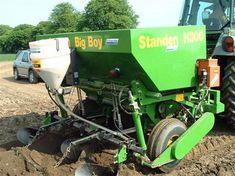
Lincolnshire-based agronomist, Boothmans (Agriculture), has pioneered the use of Brimstone elemental sulphur to combat common scab for the last eight seasons.
Approximately three per cent of the national crop was treated last year. Early indications suggested this figure will be higher this year, promoted by favourable independent trial work and better prospects for agriculture.
Brimstone Rapide sulphur prills are applied to the ridge/bed at planting. They combine with water and react to form a weak sulphuric acid, a similar reaction that causes acid rain. The acidified soil water leaches through the ridge and acidifies the soil around where the daughter tubers develop. Streptomyces scabies, the fungus causing common scab is inhibited by acid soil conditions. Past trial work has suggested soils can be acidified by as much as 1 pH and can halve levels of common scab.
This year has seen the release of fully replicated independent trial work conducted by Solanum. The trial work examined three specific areas. How great the soil acidification was, whether there was a yield increase and whether common scab reduced compared with the untreated.
Brimstone Rapide treatments gave the greatest pH reduction, the highest yield increase of 10 tonnes a hectare and the biggest commercially practical scab reduction potential.
Boothmans has invested heavily in trial work and uses its findings to make continual improvements to its recommendations. Director Robert Boothman says: “Every grower has unique agronomic circumstances. We can use our past trial work to reference and recommend specific tailored rates of Brimstone, improving growers chances of successful scab reduction. This rate advice, called SCAB-WATCH, is free to growers and available on our website.”